【Learning Points】
- Choking may cause coughing, foreign body obstruction, or hypoxemia.
- Treatment methods for elderly people who experience choking include coughing and the Heimlich maneuver. If necessary, they should seek medical treatment as soon as possible.
I. What is choking?
‘’Choking” is defined as accidental food or fluid falling into airway during the process of swallowing, and the appearing phenomenon is severe coughing after swallowing, which may be accompanied by hypoxia and foreign body coughing out. If a elderly is frequently bothered by choking episodes,some complication such as malnutrition, depression, and aspiration pneumonia may develop subsequently. Furthermore, it may cause daily life function decline, life quality impairment , and the number of hospitalization days and medical expenses increment.
‘’Choking” is defined as accidental food or fluid falling into airway during the process of swallowing, and the appearing phenomenon is severe coughing after swallowing, which may be accompanied by hypoxia and foreign body coughing out. If a elderly is frequently bothered by choking episodes,some complication such as malnutrition, depression, and aspiration pneumonia may develop subsequently. Furthermore, it may cause daily life function decline, life quality impairment , and the number of hospitalization days and medical expenses increment.
II. How to deal with choking?
During the elderly eating, we must observe if any food aspiration or leakage from mouth happens. Furthermore, the tongue’s activity decrease,swallow hard, completed swallowing multiple times, cough before swallowing,in swallowing, or after swallowing, short of breath or wet voice after swallowing, food choked on the throat after swallowing, gastroesophageal reflux, hiccup or dyspepsia. When choking happened, immediate assessment if the elderly can spontaneous breath could be done:
During the elderly eating, we must observe if any food aspiration or leakage from mouth happens. Furthermore, the tongue’s activity decrease,swallow hard, completed swallowing multiple times, cough before swallowing,in swallowing, or after swallowing, short of breath or wet voice after swallowing, food choked on the throat after swallowing, gastroesophageal reflux, hiccup or dyspepsia. When choking happened, immediate assessment if the elderly can spontaneous breath could be done:
- Encourage the elderly to cough out and clear his airway. We can knock the elderly’s chest and back softly to help him expectorate foreign bodies.
- Heimlich maneuver: stand behind the elderly and use his or her hands to exert pressure on the bottom of the diaphragm. This compresses the lungs and exerts pressure on any object lodged in the trachea, hopefully expelling it.( Picture 1)
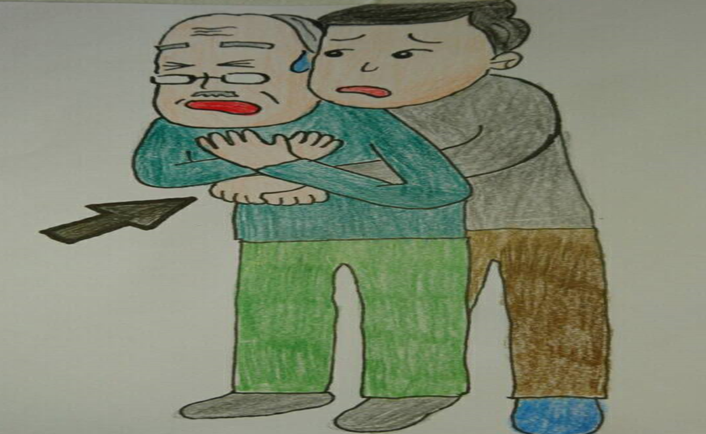
Picture 1. Heimlich maneuver - If the maneuver above can’t relieve the obstruction of airway, Should be immediately sent to a nearby hospital for treatment. If choking happens during hospitalization should immediately inform the medical staff.
III. Prevention of choking
When “choking” frequently occurs, the following procedures should be performed:
When “choking” frequently occurs, the following procedures should be performed:
- Adjust the eating position: sit up right when eating, head tilt forward slightly, shrink the chin when swallowing, for the person who can't sit completely, shake the bed to 60 degrees, then put the head up with a pillow or towel Forward, adjust your posture to avoid coughing.( Picture 2)
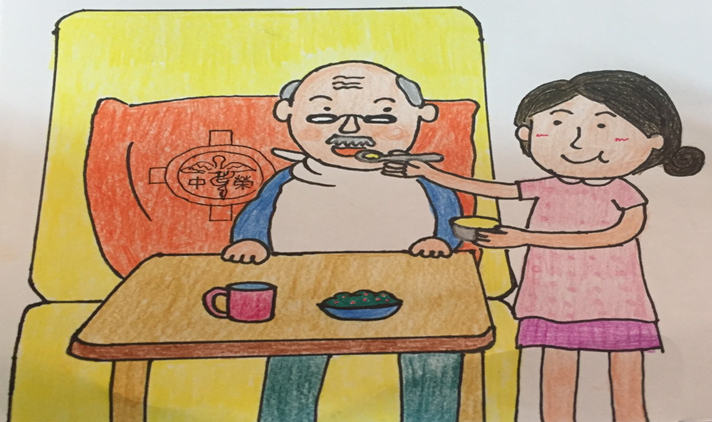
Picture 2. Eating position - Adjust food texture: First, you need to suspend the use of liquid fluids that are most likely to cause cough, such as: water, tea .Second, change liquid food to thick or paste. Add thickener to make foods be thick (Picture 3). Try to eat from foods that are free of particles or close texture like roasted wheat flour, pudding, yogurt, and jelly (Picture 4). Add sauce flavor in the meal can reduce dry rice suck into the respiratory tract.
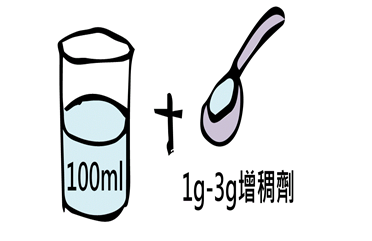
Picture 3. Thickener
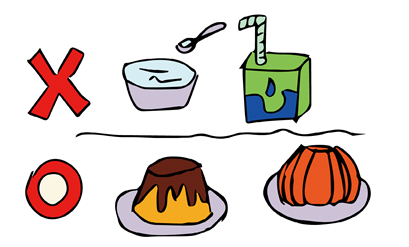
Picture 4. Solid food choose - Control the eating tempo:
- Eat slowly. Allow enough time to eat during meal. Don’t push the elderly. If coughing appears, feeding must stop.
- Don’t feed the elderly when being busy or tired.
- Use smaller spoon to feed. Don’t use cup or straw to avoid too much water in the mouth at the same time.
- Avoid feed solid and liquid diet to the mouth at the same time.
- If the elderly has poor oral movement at one side of mouth, we should feed the food in the sound side of mouth.
- Dysphagia or easily coughing elders, such as stroke, Parkinson's disease,after swallowing the food, swallowing saliva once again,it can decrease choking.
- Assistive devices: Use a lighter and narrower spoon can helps food to be delivered to specific locations in the mouth. Furthermore, use nose-notch cup(picture 5) with the posture as the following picture(picture 6). Avoid head reclining during the end of drinking, causing food to be directed to the respiratory tract.
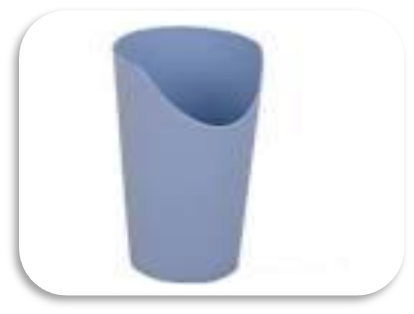
Picture 5. Nose-notch cup
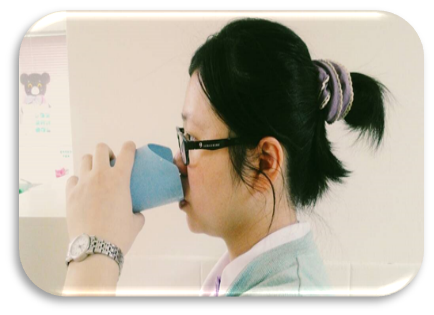
Picture 6. Method of application - Adjust medicine: Reduce the drugs that are difficult to swallow. Such as tablet that cannot be grinded or dissolve.
- Oral hygiene: Poor oral hygiene not only leads to splintered teeth and affects the ability to chew, most of the causative organisms of pneumonia come from the oral cavity, and when the saliva of the elderly is inhaled into the respiratory tract, it will increase the risk of lung infections, so cleaning the oral cavity after meals can reduce aspiration pneumonia.
- Keep a quiet dining environment without disturbance is important. Reduce noise surroundings such as television, radio, or phone, and reduce conversation with the elderly when during meal time in order not to distract the elderly.
- Adjust sleep position: During sleeping time, Swallowing function and cough reflex decreases, oral secretion may flow into airway and induce pneumonia. Therefore, always keep the elderly with easy choking sleep in a semi-reclined position about 15-30 degree.
- Change the feeding method to nasogastric tube or percutaneous endoscopic gastrostomy if necessary.
- Prepare sputum suction machine to clear overfull saliva or wash oral and teeth if necessary.
IV. Conclusion
Observe carefully for any choking signs in the elderly, and give related choking prevention procedure if choking is observed. Discuss with doctors if the above methods failed to prevent choking episodes.
V. Reference
- 林淑女、吳富美、黃怡佳、游宜珍、張丞淯(2021)・運用"SAFE"教育方案於吞嚥功能障礙個案居家照護之改善方案・醫學與健康期刊,10(2),83-102。https://doi.org/10.6709/TJD . 201712_9(2).0001
- 鄭千惠(2020)・失智症吞嚥困難患者的營養照護・長期照護雜誌,24(1),15-22。https://doi.org/ 10.6317/LTC.202004_24(1).0002
- 鄭千惠、陳珮蓉(2020).吞嚥困難與飲食食物質地標準.台灣老年學暨老年醫學會雜誌,15(2),73-83。https://doi.org/10.29461/TGGa.202005_15(2).0001
- Le, K.H.N., Low, E.E. & Yadlapati, R. (2023).Evaluation of Esophageal Dysphagia in Elderly Patients.Curr Gastroenterol Rep 25,146–159.https://doi.org/10.1007/s11894-023-00876-7
簡易測驗
Let us take the quiz to make sure you understand
評語
統計結果不開放
請登入後才可以評分
未登入或權限不足!
- 位置
-
- 資料夾名稱
- English
- 上傳者
- 黃郁琇
- 單位
- 中榮護理衛教
- 英文名稱
- Prevention choking in the elderly
- 分類
- 健康促進
- 科別
- 英語
- 癌症照護
- 否
- 建立
- 2024-01-25 21:25:14
- 制訂日期
- 2016-10-13
- 最近修訂
- 2024-03-20 10:53:00